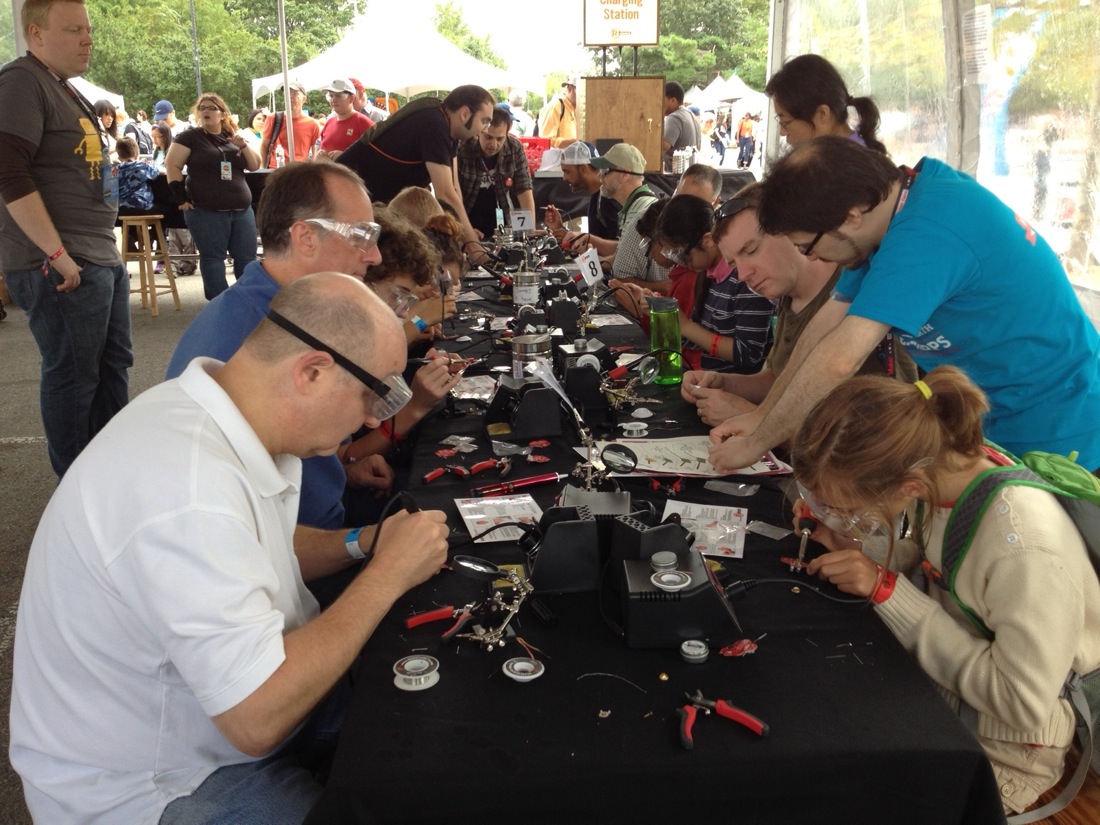Maker Faire Showcases the Best of DIY Science

NEW YORK — The lawns of Flushing Meadows-Corona Park were transformed into a giant fairground today (Sept. 21), but instead of carnival games and dunk tanks, hundreds of tents were set up to show off everything from walking robots to 3D-printed jewelry, as part of a two-day extravaganza that celebrates the best of DIY-science.
Hosted on the grounds of the New York Hall of Science, World Maker Faire returns for its third annual event in Queens, N.Y., this weekend. Thousands of people of all ages showed up today to see some of the most creative homemade projects and learn about the latest technology for at-home inventing.
This year's World Maker Faire featured more than 650 exhibitors, or "makers," and boasted entire sections dedicated to 3D printing, electronics, textiles and robots. [See Photos of World Maker Faire New York]
Kids raced miniature homemade cars at the "Nerdy Derby," while some families toiled away inside the Maker Camp tent, putting together LED pins and decorating duct tape wallets. Elsewhere, entire rows of 3D printers buzzed along, creating mini sculptures and pendants seemingly out of thin air.
Long lines of people waited to enter the "Learn to Solder" tent, filled with rows of tables, where attendees could learn the fine art of working with metal.
Inventors paraded around with their robotic creations, which ranged from upright humanoid bots to remote-controlled drones to a robotic dog whose lifelike barks attracted its fair share of attention.
Workshops and demonstrations were held throughout the day, in addition to a slew of invited speakers who wowed audiences with talks on a variety of topics, including 3D printing on the International Space Station, the idea of "hacking" the world around us to make it interactive, and the future of implantable chips or cognitive prosthetics that may one day blur the line between human bodies and devices.
Get the world’s most fascinating discoveries delivered straight to your inbox.
Educational outreach organizations were also on hand to drum up excitement about science, technology and engineering. Among them was the BioBus, a mobile laboratory housed in a school bus that travels to schools and public events to share the wonder of science through the use of microscopes.
"We show people how to operate microscopes, and we give them ideas for some things that they can look at, and we just try to guide them through the discovery and exploration process," said Matt Weisberg, who spent the day taking groups of people onboard the BioBus for short, scientific tours.
Inside, people were able to look through microscopes at tiny, freshwater crustaceans, whose see-through shells exposed all of their internal organs.
For the BioBus team members, events such as Maker Faire, are important ways for them to share their passion for science and discovery.
"A lot of the Maker Faire ethos is about opening your mind to new possibilities, so for us, the possibility of life existing at such levels of detail, and really miniscule natural machinery — we want to expose people to those ideas and get them thinking about how their world could be different," Weisberg told LiveScience.
Follow Denise Chow on Twitter @denisechow. Follow LiveScience @livescience, Facebook & Google+. Original article on LiveScience.

Denise Chow was the assistant managing editor at Live Science before moving to NBC News as a science reporter, where she focuses on general science and climate change. Before joining the Live Science team in 2013, she spent two years as a staff writer for Space.com, writing about rocket launches and covering NASA's final three space shuttle missions. A Canadian transplant, Denise has a bachelor's degree from the University of Toronto, and a master's degree in journalism from New York University.


